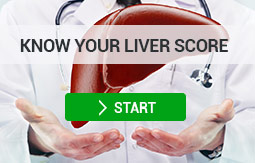It is important to know the facts to ensure that you are living the healthiest lifestyle for your liver. There are so many misconceptions about liver disease and liver health – Amsety are here to clear them up! Read our ten myths about liver disease and find out why we are busting them.
1. Myth: Liver conditions can be detected with a regular blood test.
Doctors rarely suggest the specific blood tests required to check liver function. An underlying problem cannot be detected through transaminase levels alone. Patients also need to be tested for the AST and ALT markers, which can show signs of cell destruction in the liver, as well as alkaline phosphatases, which can detect a reduction in bile secretion from the liver.
2. Myth: Spirits are worse for your liver than wine or beer.
It’s the quantity of alcohol that matters, not the type of drink U.S. government guidelines say up to one drink per day for women and up to two drinks per day for men. Drinking “good quality” alcoholic drinks may make you feel better, but it doesn’t make the alcohol that they contain any less damaging to your liver.
3. Myth: A liver transplant cures liver disease.
For those with the most severe form of liver disease, liver transplants are considered to be a last resort treatment; however, they are not cures. For lucky individuals, a complete liver transplant may be life-saving. Unfortunately, this ideal result it not always achieved. After a transplant, the body may reject the new liver or the new liver can fall victim again to the original source of liver disease.
4. Myth: Only adults get liver disease.
Every year around 15,000 children are hospitalized with liver disease or disorders. The major causes of liver disease in children are genetics however obese children are at high risk of developing fatty liver disease.
5. Myth: Fatty liver only affects fat people.
People of any weight can get fatty liver disease even if they do not have any other underlying health problems. Fatty liver can come from living an unhealthy lifestyle; not eating the right foods or exercising regularly.
6. Myth: Liver problems cause yellow skin and pains.
Liver disease usually has no symptoms at all. Hepatitis A, B and C, and cirrhosis can sometimes be diagnosed 20 to 30 years after they started. The liver is said to be silent and what feels like aches and pains in the liver is usually digestive issues caused by rich food or a high-fat diet.
7. Myth: Liver cleanses can correct existing liver damage.
Liver cleanses have not been proven to treat existing liver damage however there are many other forms of treatment available for those affected by liver disease.
8. Myth: Only alcohol damages the liver.
Indeed, alcohol does damage the liver, however, there are many other ways your liver can sustain damage. An unhealthy diet, diabetes, genetics, obesity, drugs and toxins, autoimmune diseases and high cholesterol are all major causes of liver disease.
9. Myth: Liver cleanses can correct existing liver damage.
Hepatitis C is one of the leading causes of liver disease although it can be contracted from sharing infected intravenous drug equipment there are also many other ways to become infected. For example, many people were possibly exposed to hepatitis C through medical procedures prior to 1992 when screening of blood samples was not in place. You can also contract the disease from beauty salons and tattoo parlors to name a few.
10. Myth: A fatty liver is not a serious disease.
Around 25 to 33 percent of Americans are believed to have non-alcoholic fatty liver disease. Advanced cases of fatty liver can lead to cirrhosis, liver cancer and eventually liver failure.

 (442) 244-5115
(442) 244-5115















